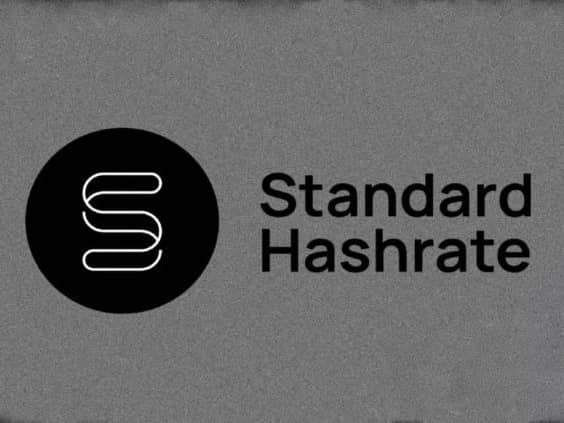위키 구독하기
Share wiki
Bookmark
Bitcoin Standard Hashrate Token
Bitcoin Standard Hashrate Token
비트코인 스탠다드 해시레이트 토큰(BTCST)(2021년 설립)은 효율성 60 W/TH로 표준화된 실제 비트코인 채굴력 0.1 TH/s로 담보된 토큰입니다. 채굴자는 새로 발행된 BTCST를 받는 대가로 플랫폼에 채굴력을 기여합니다[6][7].

초기 유통량 1,000,000개를 제외한 모든 BTCST 토큰은 25주간의 주간 선형 분배 일정이 적용됩니다[1][2].
개요
비트코인 스탠다드 해시레이트 토큰(BTCST)은 비트코인 채굴에 유동성을 제공합니다. 각 BTCST는 0.1 TH/s의 실제 비트코인 채굴력으로 담보됩니다. BTCST를 스테이킹하면 보유자는 스테이킹된 채굴력에 해당하는 일일 비트코인 배포를 받게 됩니다.
BTCST는 비트코인 채굴자 간에 효율적인 시장을 만듭니다. BTCST를 거래함으로써 시장 참여자는 언제든지 어떤 규모로든 낮은 비용으로 비트코인 채굴 노출에 자유롭게 진입하고 퇴출할 수 있습니다. BTCST로 토큰화되지 않은 채굴력이 없는 채굴자도 토큰을 사용하여 채굴 장비 비용 변동 위험을 헤지할 수 있습니다[8][9].
비트코인 스탠다드 해시레이트 토큰은 비트코인 채굴에 거래소 수준의 유동성을 제공하고 채굴 과정에 참여하면서 제한된 탈출 옵션이라는 현재 문제를 해결하는 것을 목표로 합니다[3].
팀, 파트너 및 거버넌스
프로그램 팀은 중국 운남성, 사천성, 신장성 및 내몽골 자치구에서 4년간 채굴 현장을 건설 및 관리한 경험이 있는 채굴 전문가로 구성됩니다. 팀이 관리하는 자산에는 세계 최대 클라우드 채굴 제공업체의 자산이 포함됩니다.
BTCST의 설립 파트너는 관리하에 2000 PH/s 이상의 채굴력을 보유한 기관 채굴자입니다. 이러한 설립 파트너와 파트너 채굴 풀은 프로젝트의 중요한 문제(신규 발행, 비용 수준 조정, 잉여 이익 배분 및 향후 기능 포함)를 공동으로 결정하는 거버넌스 위원회를 구성합니다.
거버넌스 위원회는 출시 시 3석을 갖게 되며, 그중 2석은 프로젝트 팀이, 1석은 파트너 채굴 풀이 차지합니다.
발행
BTCST는 실제 비트코인 채굴력이 프로젝트에 기여되거나 프로젝트가 취득했을 때에만 발행될 수 있습니다. 기여 프로그램에 따라 채굴자는 새로 발행된 BTCST를 받는 대가로 프로젝트에 적격 채굴력을 기여하기로 결정합니다.
BTCST 발행은 자유롭게 참여할 수 있으므로, 채굴자는 (i) 기여된 채굴력이 무상으로 소유되고 명확하며, (ii) 채굴력을 생성하는 장비가 프로그램 팀의 위험 평가를 통과한 현장에 호스팅되고, (iii) 5 PH/s 이상의 채굴력이 기여되는 경우 표준화 및 토큰화를 신청하기 위해 채굴력을 기여할 수 있습니다.
BTCST의 표준화 목표는 출시 시 60 W/TH입니다. 구체적으로, 적격 채굴력 단위가 기여되거나 취득되면 표준화를 기다리는 스테이징 풀에 배치됩니다. 모든 스테이징된 채굴력의 효율성이 60 W/TH가 아닌 경우, 프로젝트는 결과적으로 모든 스테이징된 채굴력의 효율성이 목표에 도달하도록 적합한 효율성을 가진 추가 채굴력을 기여하거나 취득합니다.
예를 들어, 스테이징 풀에 목표를 벗어난 75 W/TH의 효율성을 가진 총 10 PH/s의 채굴력이 있는 경우, 프로젝트는 스테이징 풀의 전반적인 효율성을 목표에 도달하도록 45 W/TH의 효율성을 가진 다른 10 PH/s의 채굴력을 조달할 수 있습니다.
스테이징 풀에 대한 블렌딩이 성공하면 프로젝트는 스테이징된 채굴력 소유자의 동의를 얻어 스테이징된 모든 채굴력 단위를 프로젝트의 토큰화 풀로 이동하고 토큰화 풀에 추가된 0.1 표준화된 TH/s 단위당 하나의 BTCST를 발행합니다. 블렌딩이 실패하면 스테이징된 채굴력의 소유권 이전이 없고 토큰 발행도 없습니다.
토큰 설계의 작동에 따라 BTCST의 총 유통량은 모든 유통 토큰이 집합적으로 나타내는 채굴력의 양을 최소한 생성해야 합니다. 예를 들어, 블록체인에 유통 중인 BTCST가 10,000개인 경우 프로젝트는 비트코인 채굴력에서 최소 1000 TH/s를 생성해야 합니다. 채굴 풀은 독립 감사자로서 프로젝트와 파트너 관계를 맺고 채굴 보상의 충분성을 입증하고 BTCST가 채굴력으로 완전히 또는 초과 담보되었음을 증명하기 위해 정기적으로 보고서를 발표합니다.
토큰 할당
| 토큰 이름 | BTCST |
|---|---|
| 바이낸스 런치풀 | 초기 유통량의 4.00% |
| 초기 토큰화 채굴자 | 초기 유통량의 96.00% |
잘못된 내용이 있나요?
